
Find Help
More Items From Ergsy search
-

How can I prevent Carpal Tunnel Syndrome?
Relevance: 100%
-

Carpal Tunnel Syndrome
Relevance: 100%
-

What causes Carpal Tunnel Syndrome?
Relevance: 94%
-

What is Carpal Tunnel Syndrome (CTS)?
Relevance: 92%
-

Is Carpal Tunnel Syndrome covered by the NHS?
Relevance: 91%
-

How is Carpal Tunnel Syndrome diagnosed?
Relevance: 91%
-
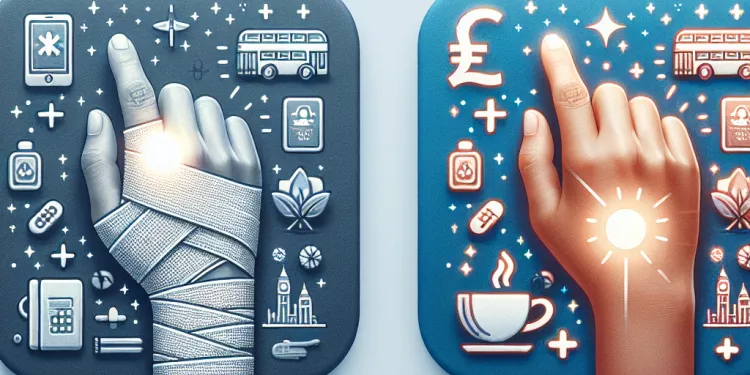
Can Carpal Tunnel Syndrome recur after treatment?
Relevance: 87%
-
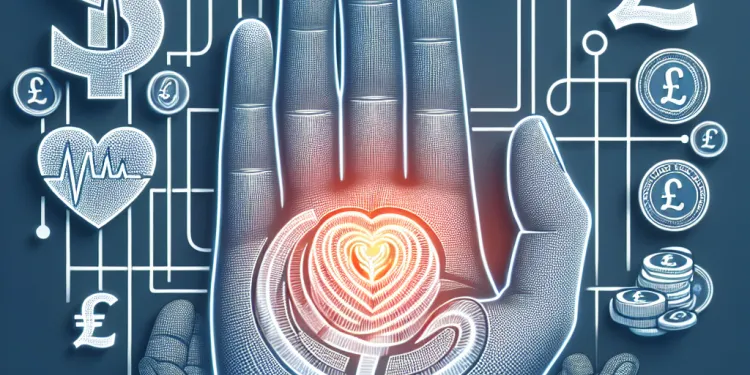
Are there any alternative treatments for Carpal Tunnel Syndrome?
Relevance: 86%
-
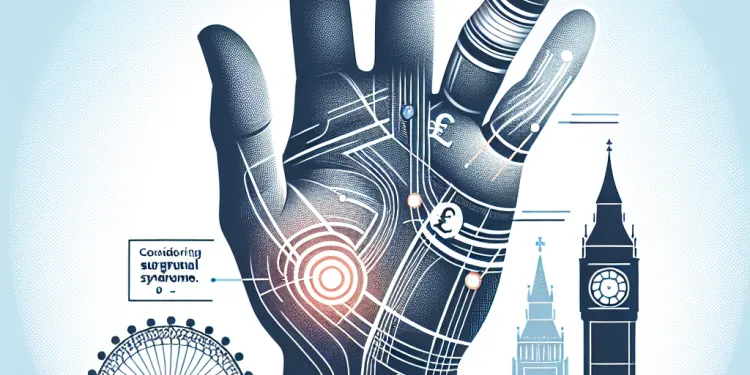
When should I consider surgery for Carpal Tunnel Syndrome?
Relevance: 85%
-

Are there specific exercises that can help with Carpal Tunnel Syndrome?
Relevance: 85%
-

What non-surgical treatments are available for Carpal Tunnel Syndrome?
Relevance: 84%
-

What does Carpal Tunnel Syndrome surgery involve?
Relevance: 83%
-

What are the common symptoms of Carpal Tunnel Syndrome?
Relevance: 78%
-

Can lifestyle changes help manage Carpal Tunnel Syndrome?
Relevance: 76%
-
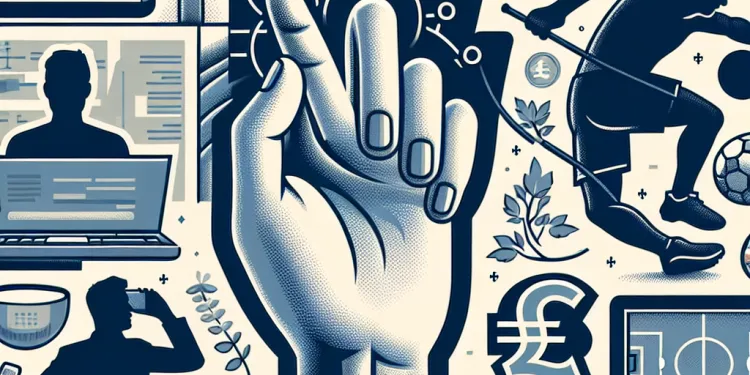
Can I work or continue sports activities if I have Carpal Tunnel Syndrome?
Relevance: 76%
-

What is the recovery time after Carpal Tunnel Surgery?
Relevance: 63%
-

Can baby sleep pillows prevent flat head syndrome?
Relevance: 31%
-

What is Cushing's syndrome?
Relevance: 25%
-

Prader-Willi Syndrome | NHS
Relevance: 25%
-

Munchausen's syndrome | NHS
Relevance: 25%
-

What is congenital rubella syndrome?
Relevance: 24%
-

Having a child with Down's syndrome | NHS
Relevance: 24%
-
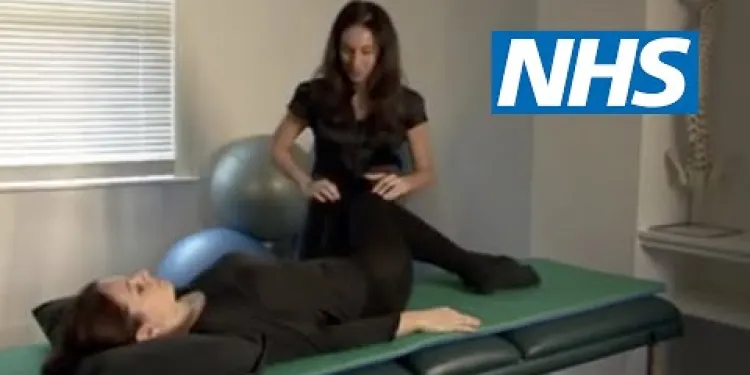
Exercises for sciatica: piriformis syndrome | NHS
Relevance: 24%
-

Is chronic fatigue syndrome contagious?
Relevance: 23%
-

Can CFS be prevented?
Relevance: 23%
-

Turner syndrome: Beyond the classic XO phenotype
Relevance: 23%
-

Down's syndrome: Emily's story | NHS
Relevance: 23%
-

Greater trochanteric pain syndrome
Relevance: 23%
-

What is chronic fatigue syndrome?
Relevance: 23%
-

Charles Bonnet Syndrome
Relevance: 23%
-

What causes chronic fatigue syndrome?
Relevance: 22%
-
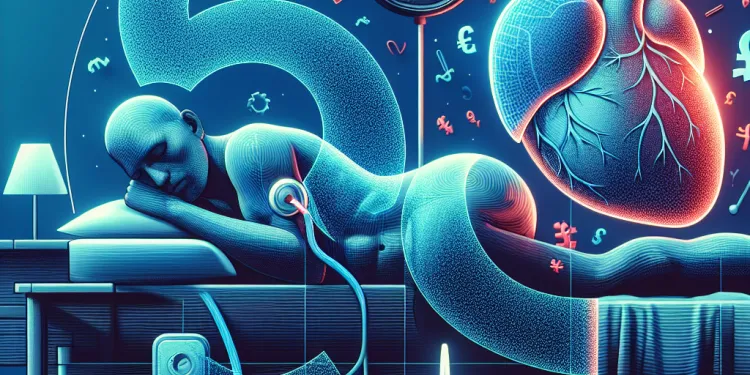
What is complex sleep apnea syndrome?
Relevance: 22%
-

What is complex sleep apnea syndrome?
Relevance: 22%
-

Who is at risk of developing chronic fatigue syndrome?
Relevance: 22%
-

Having a child with Edwards' syndrome (trisomy 18) | NHS
Relevance: 21%
-

What is the difference between autism and Asperger's syndrome?
Relevance: 21%
-
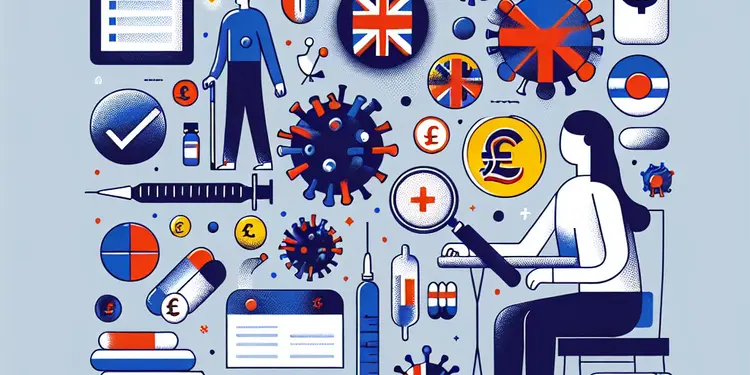
What role do infections play in chronic fatigue syndrome?
Relevance: 21%
-

Is chronic fatigue syndrome a mental illness?
Relevance: 21%
-

Are there psychological aspects to chronic fatigue syndrome?
Relevance: 20%
-

Building Understanding and Supporting Your Child with Tourette’s Syndrome/Tics
Relevance: 20%
Understanding Carpal Tunnel Syndrome
Carpal Tunnel Syndrome (CTS) is a common condition that causes pain, numbness, or tingling in the hand and arm. It occurs when the median nerve, which runs through the carpal tunnel in the wrist, becomes compressed. Understanding how to prevent this condition is crucial, especially for those who perform repetitive tasks that strain their wrists, such as typing, sewing, or using hand tools.
Maintain a Neutral Wrist Position
Keeping your wrists in a neutral position reduces pressure on the carpal tunnel. When typing or using a mouse, try to keep your wrists straight, or only slightly bent. Use an ergonomic keyboard and mouse that are designed to keep your hands in this position. Avoid resting your wrists on hard surfaces while typing. Instead, use a soft wrist rest if needed.
Take Regular Breaks
Preventing Carpal Tunnel Syndrome involves reducing strain on your wrists. Taking regular breaks from repetitive tasks allows time for your muscles and tendons to rest. Try to take a short break every hour, where you can stand up, stretch, and move around. This practice is particularly important for those spending long hours at a computer.
Exercise Your Hands and Wrists
Hand and wrist exercises can strengthen muscles and improve flexibility, which may reduce the risk of developing Carpal Tunnel Syndrome. Gentle stretches, such as extending your fingers, rotating your wrists, and bending your fingers can be beneficial. Engage in exercises that focus on the whole arm, shoulder, and neck area to maintain overall upper body flexibility and posture.
Ensure Ergonomic Work Practices
Adjust your workstation to allow for comfortable wrist and arm positions. Your chair should support your lower back and allow your feet to rest flat on the floor. Position your monitor at eye level to avoid leaning forward and maintain good posture. An ergonomic desk setup not only helps in preventing Carpal Tunnel Syndrome but enhances overall productivity and reduces other musculoskeletal disorders.
Use Proper Tools
Choosing the right tools can significantly reduce strain on your hands and wrists. Use tools with padded handles and ensure they are the right size for your hand. For those who engage in manual labour, consider wearing wrist guards or braces for support. Look for equipment designed with ergonomics in mind, whether it’s for cooking, gardening, or other hobbies.
Stay Active
Maintaining an active lifestyle can help prevent a wide range of conditions, including Carpal Tunnel Syndrome. Regular physical activity helps in keeping your weight in check, which can reduce pressure on the carpal tunnel. Activities such as swimming, yoga, or walking are excellent choices that promote flexibility, strength, and general well-being.
Understanding Carpal Tunnel Syndrome
Carpal Tunnel Syndrome (CTS) can cause your hand and arm to hurt or feel numb and tingly. It happens when a nerve in your wrist called the median nerve gets squeezed. It's important to know how to stop this from happening, especially if you do the same hand movements a lot, like typing, sewing, or using tools.
Keep Your Wrists Straight
Try to keep your wrists straight when working. This helps keep the nerve from getting squeezed. When typing or using a mouse, don’t bend your wrists too much. Use a special keyboard and mouse that help you keep your hands straight. Put something soft under your wrists if resting them on a hard surface hurts.
Take Breaks Often
To help your wrists, take breaks from doing the same thing over and over. Take a short break each hour to stand up, stretch, and walk around. This is very important if you sit at a computer for a long time.
Do Hand and Wrist Exercises
Exercises can make your hand and wrist muscles strong and flexible. Try slowly stretching your fingers, moving your wrists in circles, and bending your fingers. Exercises that work your arms, shoulders, and neck are also good to help your whole upper body stay fit.
Set Up Your Desk the Right Way
Make sure your desk is set up so you’re comfortable. Your chair should support your back, and your feet should touch the floor. Keep your computer screen at eye level so you don’t need to lean forward. A good desk setup not only helps your wrists but also makes you work better and stay healthy.
Choose the Right Tools
Using tools that are easy on your hands can help a lot. Pick tools with soft handles that fit your hand comfortably. If you do work with your hands, think about wearing wrist guards for extra support. Look for tools made to be easy on your body, no matter if you’re cooking, gardening, or doing other activities.
Stay Active
Doing things like swimming, yoga, or walking keeps you fit and can help stop Carpal Tunnel Syndrome. Staying active helps control your weight, which can lower the pressure on your wrist nerve. Being active is good for your whole body.
Frequently Asked Questions
What is Carpal Tunnel Syndrome?
Carpal Tunnel Syndrome is a condition caused by pressure on the median nerve in the wrist, leading to pain, numbness, and tingling in the hand and arm.
What are some common symptoms of Carpal Tunnel Syndrome?
Common symptoms include numbness, tingling, and pain in the thumb, index, and middle fingers, as well as weakness in the hand.
How can I adjust my workspace to prevent Carpal Tunnel Syndrome?
Ensure your keyboard and mouse are at the same height, use an ergonomic chair, and keep your wrists straight when typing.
What are ergonomic keyboards, and how do they help?
Ergonomic keyboards are designed to reduce strain on the hands and wrists by promoting a more natural hand position.
How often should I take breaks to prevent Carpal Tunnel Syndrome?
Take breaks every 20-30 minutes to stretch and relax your hands and wrists.
What exercises can help prevent Carpal Tunnel Syndrome?
Wrist stretches, hand stretches, and finger exercises can help maintain flexibility and reduce tension.
Can wearing wrist splints help in preventing Carpal Tunnel Syndrome?
Wearing wrist splints at night can prevent the wrist from bending and relieve pressure on the median nerve.
How does maintaining proper posture help prevent Carpal Tunnel Syndrome?
Good posture reduces strain on your neck, shoulders, and arms, which can help prevent excessive pressure on the wrists.
Are there any dietary recommendations for preventing Carpal Tunnel Syndrome?
A balanced diet with anti-inflammatory foods and proper hydration can help promote overall joint health.
What role does a proper mouse technique play in preventing Carpal Tunnel Syndrome?
Using a mouse that fits well in your hand, keeping your wrist straight, and using your whole arm to move the mouse can help prevent strain.
Can stress management help in preventing Carpal Tunnel Syndrome?
Yes, stress management can reduce muscle tension and repetitive strain, which may help in preventing Carpal Tunnel Syndrome.
What role does routine stretching play in preventing Carpal Tunnel Syndrome?
Routine stretching helps maintain flexibility, reduce tension in the wrists and hands, and can help prevent Carpal Tunnel Syndrome.
Can yoga help in preventing Carpal Tunnel Syndrome?
Yoga can improve posture, increase strength and flexibility in the fingers, arms, wrists, and hands, potentially reducing symptoms.
How important is the positioning of your monitor in preventing Carpal Tunnel Syndrome?
A properly positioned monitor helps maintain good posture, reducing strain on the wrists and preventing Carpal Tunnel Syndrome.
Does weight play a role in the risk of developing Carpal Tunnel Syndrome?
Maintaining a healthy weight can reduce inflammation and pressure on the median nerve, lowering the risk of developing Carpal Tunnel Syndrome.
Is it helpful to use voice recognition software to reduce the risk of Carpal Tunnel Syndrome?
Yes, using voice recognition software can reduce the amount of typing required, decreasing strain on your wrists and hands.
How can overuse of mobile devices contribute to Carpal Tunnel Syndrome?
Frequent texting or scrolling can strain the wrist and fingers, leading to repetitive stress injuries such as Carpal Tunnel Syndrome.
What types of jobs are more likely to cause Carpal Tunnel Syndrome?
Jobs involving repetitive hand and wrist movements, such as assembly line work or heavy computer use, are more at risk.
How can I differentiate between Carpal Tunnel Syndrome and other wrist/hand conditions?
Consult a healthcare professional for imaging tests and examinations to accurately diagnose Carpal Tunnel Syndrome.
Is it possible to fully prevent Carpal Tunnel Syndrome?
While it's not always possible to completely prevent it, taking proactive steps can significantly reduce the risk and alleviate symptoms.
What is Carpal Tunnel Syndrome?
Carpal Tunnel Syndrome is when your wrist hurts a lot because a nerve is squeezed. This can make your hand feel tingly or weak. It might be hard to hold things.
To help with Carpal Tunnel Syndrome, you can:
- Take breaks and rest your hands.
- Do gentle hand exercises.
- Use a wrist splint to keep your wrist straight.
- Ask a doctor for more help.
Carpal Tunnel Syndrome happens when there's pressure on a nerve in your wrist. This makes your hand and arm feel sore, numb, or tingly.
Helpful Tip: Try special stretches or use a wrist support to feel better.
What happens when you have Carpal Tunnel Syndrome?
Carpal Tunnel Syndrome can cause your hand to feel strange. Here are some things you might feel:
- Your hand might feel tingly, like pins and needles.
- You might feel pain in your hand or fingers.
- Your hand might feel weak or get tired easily.
- You might drop things more often.
To help with these feelings, you can:
- Take breaks to rest your hands.
- Try exercises to stretch your hands and fingers.
- Use a wrist splint to keep your wrist straight.
- Ask a grown-up for special tools or help.
You might feel your thumb, first finger, and middle finger go numb. They could feel tingly, like little pins and needles. Sometimes, they might hurt too. Your hand might feel weak.
How can I change my workspace to stop getting Carpal Tunnel Syndrome?
Carpal Tunnel Syndrome can hurt your hands and wrists. Here is how to keep your hands and wrists feeling good while you work:
- Chair: Sit on a chair that is comfy and supports your back. Your feet should touch the floor.
- Keyboard and Mouse: Keep your keyboard and mouse close so you do not have to stretch your arms. Your wrists should be straight and not bent.
- Screen: Put your screen at eye level. This helps you sit up straight and makes it easy to see.
- Take Breaks: Stop and stretch your hands and arms every hour.
- Tools: Use a wrist rest pad. It helps keep your wrists straight.
Try these tips to help your hands and wrists stay healthy. If you feel pain, tell an adult and see a doctor.
Make sure your keyboard and mouse are at the same level. Sit in a comfy chair that supports your back. Keep your wrists straight when you type.
What are ergonomic keyboards, and how do they help?
An ergonomic keyboard is a kind of keyboard. It is designed to be comfortable for your hands and wrists.
These keyboards help reduce pain in your hands and arms when you type a lot.
Some ergonomic keyboards are split in the middle. This helps you keep your hands in a better position.
A tool you can use is a wrist rest. A wrist rest helps keep your wrists straight and comfy.
You can also take breaks often when you type. Stand up and stretch your hands and fingers.
Using an ergonomic keyboard can make typing easier and less painful.
Ergonomic keyboards are made to help your hands and wrists feel better. They let you type in a more comfortable way.
How many breaks should I take to stop my hands from hurting?
Use simple words. Take breaks often to rest your hands. Try to use a timer. Set it to remind you to take a break every 30 minutes. Stretch your fingers and wrists during the break. You can also use a soft ball to squeeze gently.
Stop what you are doing every 20 to 30 minutes. Take a break. Stretch your hands and wrists. This helps them stay relaxed.
What exercises can stop Carpal Tunnel Syndrome?
Some exercises can help keep your wrists and hands healthy. They can stop pain called Carpal Tunnel Syndrome. Here are some easy exercises:
- Wrist Stretch: Hold your hand out with the palm up. Use your other hand to gently bend your fingers down. Hold for a few seconds.
- Finger Stretch: Open and close your fingers, like a fist, then spread them wide.
- Wrist Shake: Shake your hands like you're trying to dry them.
Do these exercises a few times every day. They can keep your hands and wrists feeling good.
If reading is hard, try using tools that can read the text out loud to you.
Stretch your wrists, hands, and fingers. This helps them stay flexible and feel less tight.
Do wrist splints help stop Carpal Tunnel Syndrome?
Wrist splints can help protect your wrist. They keep your wrist straight. This might help stop Carpal Tunnel Syndrome.
Wrist splints are like a soft brace. You can wear them when you sleep or when you do things that use your hands a lot.
It's good to also take breaks and stretch your hands. If you have pain, tell a grown-up or see a doctor.
Wearing wrist splints when you sleep can stop your wrist from bending. This can help take the pressure off the median nerve.
How does sitting up straight help stop Carpal Tunnel Syndrome?
Sitting up straight can help your hands and wrists feel better. It stops you from bending your wrists too much. When your wrists are straight, it is harder to get Carpal Tunnel Syndrome.
Try using tools like special wrist pads when typing. They can help keep your wrists straight and comfy.
Good posture is important. It helps keep your neck, shoulders, and arms from getting too tired. This can stop your wrists from hurting too much.
Here are some tips that might help:
- Sit or stand up straight.
- Keep your shoulders back.
- Try using a chair with good support.
- Take breaks to move around.
- Stretch your arms and wrists gently.
What foods can help stop Carpal Tunnel Syndrome?
Eating the right foods and drinking enough water can help keep your joints healthy. Try to eat foods that reduce swelling in the body.
How does using a mouse the right way stop wrist pain?
Using your computer mouse the right way helps keep your wrist healthy. It can stop pain and problems in your hand.
Here are some tips to help:
- Keep your wrist straight when you use the mouse.
- Take breaks often. Rest your hand and stretch.
- Make sure your desk and chair are the right height.
Use a mouse that feels good in your hand. Keep your wrist straight. Move the mouse with your whole arm, not just your wrist. This can help stop your arm from hurting.
Can managing stress stop Carpal Tunnel Syndrome?
Carpal Tunnel Syndrome (CTS) is a problem with your hand and wrist. It happens when a nerve in your wrist gets squeezed.
Stress is when you feel worried or under pressure.
Managing stress means finding ways to feel calm and relaxed. This can help your body feel better.
Here are some easy ways to manage stress:
- Take Deep Breaths: Breathe in slowly through your nose, then out through your mouth.
- Stretch Your Hands and Wrists: Move them gently to keep them loose.
- Take Breaks: Rest your hands if you use them a lot.
- Think Happy Thoughts: Remember fun times or things you like.
Using these tips can help you feel less stressed and may help stop problems like Carpal Tunnel Syndrome. If you are worried about your hands or feel pain, you should talk to a doctor or a healthcare worker.
Yes, when you feel less stress, your muscles can relax. This can stop your hands from getting hurt. It might help stop Carpal Tunnel Syndrome.
How does stretching help stop Carpal Tunnel Syndrome?
Stretching can keep your wrists and hands healthy.
It helps stop pain from Carpal Tunnel Syndrome.
Do stretches often to stay strong.
You can set a timer to remember to stretch.
Ask someone to show you good stretches.
Stretching your body every day can help keep you flexible. It also helps your wrists and hands feel relaxed. Stretching can stop your hands from hurting or getting sick, like with something called Carpal Tunnel Syndrome.
Can yoga stop Carpal Tunnel Syndrome?
Carpal Tunnel Syndrome is a problem in your wrist. It can hurt or make your hand feel funny.
Yes, yoga can help! Yoga is good for keeping your body healthy. Yoga stretches and moves can make your hands and wrists strong.
Try doing yoga with a video or a teacher. They can show you how to do it safely.
Remember to take breaks if your hands feel tired when using the computer or phone.
Yoga can help you stand up straight. It makes your fingers, arms, wrists, and hands stronger and more stretchy. This might make you feel better.
Does where you put your computer screen help stop Carpal Tunnel Syndrome?
Carpal Tunnel Syndrome can make your hands and wrists hurt.
Putting your computer screen in the right place can help stop the pain.
Make sure your screen is at eye level. This way, you don't bend your neck or wrists too much.
Use a chair and desk that are the right height for you.
Take breaks and move around to keep your hands feeling good.
A computer screen in the right place helps you sit up straight. This makes sure your wrists don't hurt. It can stop problems like Carpal Tunnel Syndrome.
Tip: Use a wrist rest when typing to keep your hands comfortable.
Can your weight affect your chances of getting Carpal Tunnel Syndrome?
If you weigh more, you might have a higher chance of getting Carpal Tunnel Syndrome. This is when your hand hurts or tingles. If you think you have this problem, you can talk to a doctor or ask for help.
Here are some tools that can help you understand more:
- Ask someone to read with you.
- Use a dictionary to look up words you don't know.
- Watch videos about Carpal Tunnel Syndrome for more information.
Keeping a healthy weight is good for your body. It can help stop swelling and pressure on the median nerve. This can make it less likely for you to get Carpal Tunnel Syndrome. You can use things like pictures and short stories to help you understand this better.
Can using speech tools help prevent hand pain from typing?
Yes, you can use voice recognition software. This helps you talk instead of type. It can stop your wrists and hands from getting sore.
How can using mobile devices too much cause hand and wrist pain?
Using phones and tablets too often can hurt your hands and wrists. This pain is called Carpal Tunnel Syndrome.
Here’s how using devices too much can hurt:
- Holding your phone for a long time can make your hand and wrist tired.
- Typing a lot on a small screen can strain your fingers.
- Swiping and tapping can make the muscles in your hand sore.
To help your hands and wrists, try these tips:
- Take breaks often when using your phone or tablet.
- Use a stylus to tap instead of your fingers.
- Hold your device in a comfortable position.
- Stretch your hands and wrists during breaks.
Sending lots of texts or scrolling on your phone a lot can hurt your wrist and fingers. This can lead to problems like Carpal Tunnel Syndrome.
Carpal Tunnel Syndrome is when your wrist and hand hurt because of too much movement.
Try to take breaks often and stretch your hands. This can help. You might also want to use special gloves or wrist supports.
What jobs can give you Carpal Tunnel Syndrome?
Some jobs can hurt your hands and wrists. This can cause something called Carpal Tunnel Syndrome. Here are some jobs where this might happen:
- Typing a lot on a computer.
- Using tools that vibrate, like a drill.
- Working with your hands a lot, like painting or sewing.
- Playing musical instruments.
To help your hands and wrists:
- Take breaks often.
- Stretch your hands and wrists.
- Use cushions or support when typing.
- Switch hands if you can.
Some jobs can hurt your hands and wrists if you do the same thing over and over. This happens in jobs like working on an assembly line or using a computer a lot.
How can I tell if I have Carpal Tunnel or another wrist/hand problem?
Carpal Tunnel Syndrome can make your wrist and hand hurt, feel tingly, or go numb. But other things can make your wrist and hand feel bad too. Here are some tips to help you figure it out:
- If your thumb, first, middle, and part of your ring finger feel funny or go numb, it might be Carpal Tunnel. This happens because a nerve is getting squeezed.
- Try moving your hands and wrists gently. Does the pain get better or worse? Write down what you feel.
- If you do the same hand activities every day, it might make Carpal Tunnel worse. Think about what you do, like typing or playing video games.
- Rest your hand and wrist to see if it helps. Sometimes using a wrist brace can make it feel better.
If you’re not sure, ask a doctor to help find out what is wrong. They can do tests to know for sure.
See a doctor to get special tests and check-ups. This will help find out if you have Carpal Tunnel Syndrome.
Can You Stop Carpal Tunnel Syndrome for Good?
Carpal Tunnel Syndrome is a problem with your hand and wrist. It can make them hurt or feel weak. You might not be able to stop it completely. But, there are ways to make it better.
Here are some tips to help:
- Rest your hands often.
- Don’t grip things too tight.
- Sit up straight and keep your hands in line with your arms.
- Try wrist exercises or stretches.
If your hands still hurt, it’s good to talk to a doctor. They can give you advice on what to do next.
Sometimes we can't stop it from happening, but we can do things to make it less likely and help with the symptoms.
Useful Links
- Ergsy carfully checks the information in the videos we provide here.
- Videos shown by Youtube after a video has completed, have NOT been reviewed by ERGSY.
- To view, click the arrow in centre of video.
- Most of the videos you find here will have subtitles and/or closed captions available.
- You may need to turn these on, and choose your preferred language.
- Go to the video you'd like to watch.
- If closed captions (CC) are available, settings will be visible on the bottom right of the video player.
- To turn on Captions, click settings .
- To turn off Captions, click settings again.
More Items From Ergsy search
-

How can I prevent Carpal Tunnel Syndrome?
Relevance: 100%
-

Carpal Tunnel Syndrome
Relevance: 100%
-

What causes Carpal Tunnel Syndrome?
Relevance: 94%
-

What is Carpal Tunnel Syndrome (CTS)?
Relevance: 92%
-

Is Carpal Tunnel Syndrome covered by the NHS?
Relevance: 91%
-

How is Carpal Tunnel Syndrome diagnosed?
Relevance: 91%
-

Can Carpal Tunnel Syndrome recur after treatment?
Relevance: 87%
-

Are there any alternative treatments for Carpal Tunnel Syndrome?
Relevance: 86%
-

When should I consider surgery for Carpal Tunnel Syndrome?
Relevance: 85%
-

Are there specific exercises that can help with Carpal Tunnel Syndrome?
Relevance: 85%
-

What non-surgical treatments are available for Carpal Tunnel Syndrome?
Relevance: 84%
-

What does Carpal Tunnel Syndrome surgery involve?
Relevance: 83%
-

What are the common symptoms of Carpal Tunnel Syndrome?
Relevance: 78%
-

Can lifestyle changes help manage Carpal Tunnel Syndrome?
Relevance: 76%
-

Can I work or continue sports activities if I have Carpal Tunnel Syndrome?
Relevance: 76%
-

What is the recovery time after Carpal Tunnel Surgery?
Relevance: 63%
-

Can baby sleep pillows prevent flat head syndrome?
Relevance: 31%
-

What is Cushing's syndrome?
Relevance: 25%
-

Prader-Willi Syndrome | NHS
Relevance: 25%
-

Munchausen's syndrome | NHS
Relevance: 25%
-

What is congenital rubella syndrome?
Relevance: 24%
-

Having a child with Down's syndrome | NHS
Relevance: 24%
-

Exercises for sciatica: piriformis syndrome | NHS
Relevance: 24%
-

Is chronic fatigue syndrome contagious?
Relevance: 23%
-

Can CFS be prevented?
Relevance: 23%
-

Turner syndrome: Beyond the classic XO phenotype
Relevance: 23%
-

Down's syndrome: Emily's story | NHS
Relevance: 23%
-

Greater trochanteric pain syndrome
Relevance: 23%
-

What is chronic fatigue syndrome?
Relevance: 23%
-

Charles Bonnet Syndrome
Relevance: 23%
-

What causes chronic fatigue syndrome?
Relevance: 22%
-

What is complex sleep apnea syndrome?
Relevance: 22%
-

What is complex sleep apnea syndrome?
Relevance: 22%
-

Who is at risk of developing chronic fatigue syndrome?
Relevance: 22%
-

Having a child with Edwards' syndrome (trisomy 18) | NHS
Relevance: 21%
-

What is the difference between autism and Asperger's syndrome?
Relevance: 21%
-

What role do infections play in chronic fatigue syndrome?
Relevance: 21%
-

Is chronic fatigue syndrome a mental illness?
Relevance: 21%
-

Are there psychological aspects to chronic fatigue syndrome?
Relevance: 20%
-

Building Understanding and Supporting Your Child with Tourette’s Syndrome/Tics
Relevance: 20%


